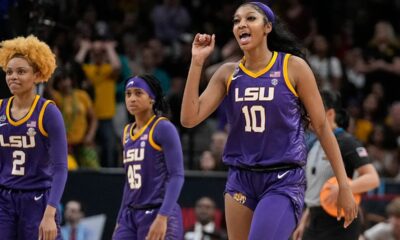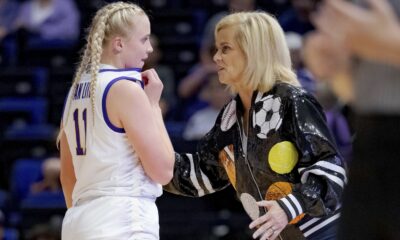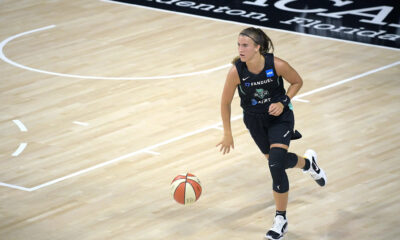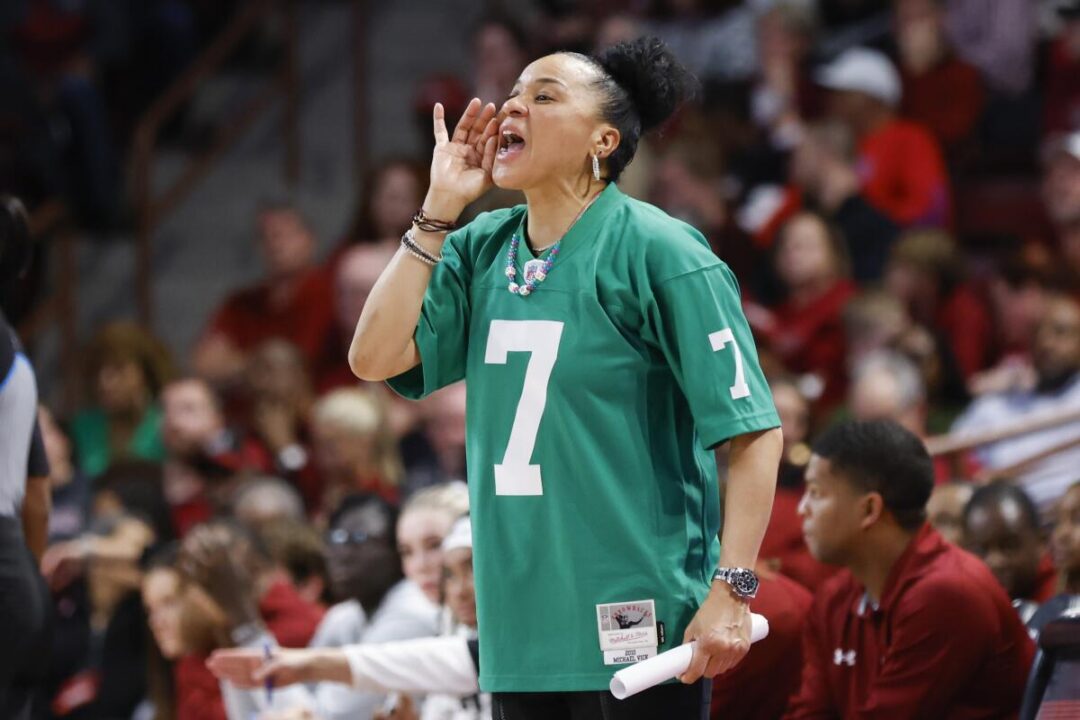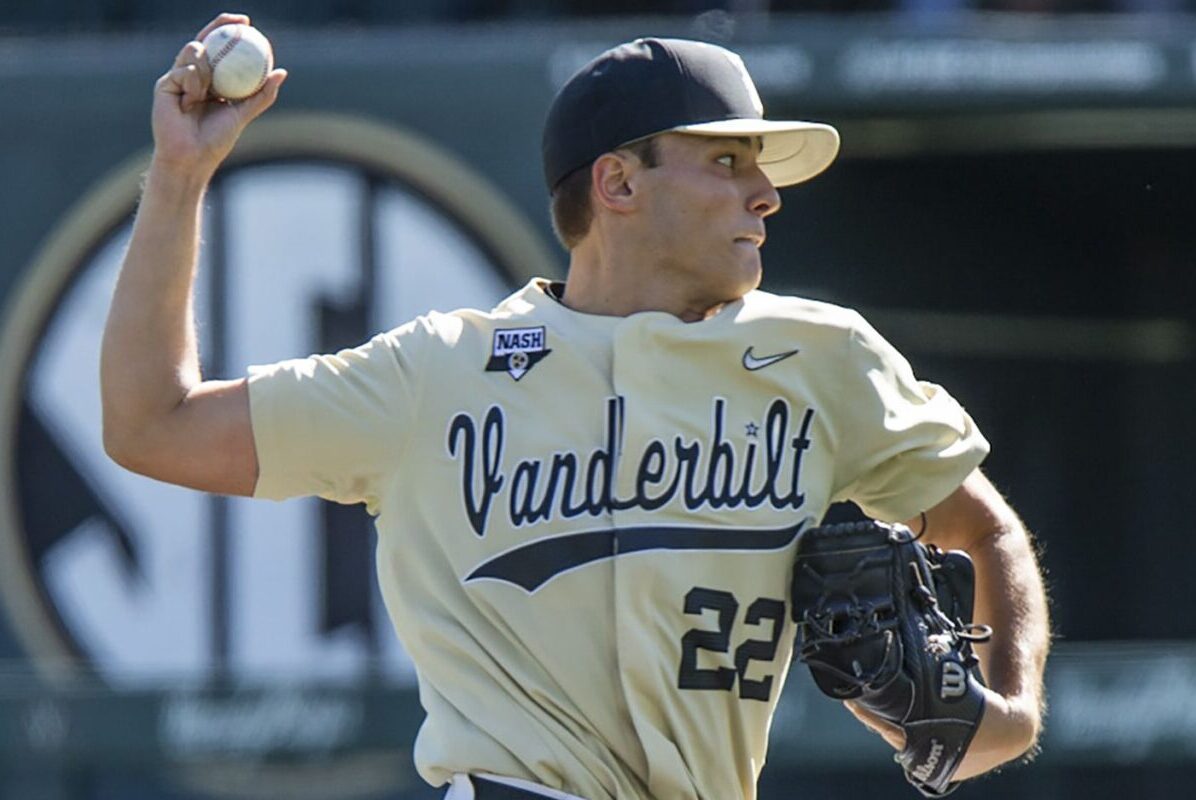
All eight teams in the College World Series this weekend have players who will be selected in the MLB Draft next month.
The College World Series begins this weekend with the final eight teams vying for the championship. For MLB fans who perhaps do not follow college baseball closely until June, this will be a primer on the top players who will be drafted next month. All rankings refer to MLB Pipeline’s top 250 list. Plenty of guys playing will be picked in later rounds, but I will limit this to just the top 250. Teams will be listed by their national seed. On-field stats come from D1 Baseball.
Texas Longhorns, #2 Overall
Texas cruised through the Regionals and Super Regionals with a 5-0 record, and they are led by right-hander Ty Madden (9) Madden will go in the top half of the first round with a plus fastball and slider, in addition to a solid changeup and command. His fastball plays well in the mid-90’s against tough Big 12 lineups, and he will get another tough test against Mississippi State in the team opener. Madden’s results have been a tad inconsistent at times, but he boasts a 2.41 ERA with 119 strikeouts in 100.2 innings and an opponent batting average of just .189. The Bulldogs better be ready.
Tennessee Volunteers, #3 Overall
Tennessee went to the brink early, needing a walk-off grand slam to beat Wright State in their Regional Opener. They came back through the loser’s bracket and then handled LSU in the Supers. Even though he has disappointed this year, Max Ferguson (145) has been a big part of their success lately. He was expected to be a first rounder before the season but might only go in the third or later at this point. He only hit .256, a concerningly low college number for someone to translate in the professional ranks. But he hit a walk-off homer against top-ranked Arkansas in conference play, and his plus speed and reliable defense will entice a team to take him.
Jake Rucker (210) has pretty average tools across the board, but his strong performance has continued from last year. He had an OPS of 1.006 in the abbreviated 2020 season, and this year he is sitting at .926. He has nine home runs this season, a decent number, but five of them have come in the postseason. With the draft pushed back from its usual June dates, tournament success will have some voice in draft rooms.
Chad Dallas (211) might not seem like much of a prospect with a 4.10 ERA, but he is Tennessee’s Friday night starter with 118 strikeouts in 96.2 innings. He throws a plus mid-80’s cutter that is a sharp departure from his mid-90’s four-seamer. He impressed scouts last weak with a career-high twelve strikeouts against a talented LSU lineup. Dallas could become a solid righty specialist.
Vanderbilt Commodores, #4 Overall
The pitching factory is producing once again. Behind the two best pitching prospects and a balanced lineup, Vanderbilt has shut down their tournament opponents. Georgia Tech took them to extras in the Regionals and East Carolina played two close games, but ultimately the Vandy Boys are 5-0 and my pick to win the College World Series. The staff is led by Jack Leiter (3), who owns a 2.16 ERA with an opponent batting average of .127 and 156 strikeouts in 96 innings, the most in the nation. Leiter is truly a nightmare to face with four effective pitches. Even though it is not particularly hard, his fastball is double plus because it moves deceptively. Fans of whichever team drafts him should be thrilled.
The top prospect entering the year, Kumar Rocker (6) has had some mixed results. Rocker broke onto the scene with a 19-strikeout no-hitter in the 2019 tournament but hasn’t dominated to the same extent this season. His 2.46 ERA and 155 strikeouts are great, but his fastball velocity fluctuates too much and he got hit around toward the end of the season and in the SEC tournament. The good news is that he had everything working against ECU, throwing 7.2 shutout innings. Rocker relies on stuff due to his so-so command, but his slider might be the best in this draft class.
Vanderbilt is not all pitching. Isaiah Thomas (95) has a solid power/speed foundation and could potentially play center field in the right situation. He has played right field because future first rounder Enrique Bradfield covers more ground. Thomas has a lower hit tool, but you wouldn’t know it based on his .330/.389/.635 slash line.
Oddly enough, Dominic Keegan’s (174) best tool is his arm strength even though he primarily plays first base. Injuries have prevented him from playing other positions the last two years, but he is still hitting well. His slash line is better Thomas’s across the board, good enough for a 1.114 OPS and 14 home runs.
Closers are never drafted highly, but the best ones can go in the middle rounds. Nick Maldonado (216) has eight saves this season and much better command than most relievers. He can throw his plus slider in early counts and as an out pitch. It is possible he goes back to school to be a starter and raise his value.
Another relief option, Luke Murphy (220) throws a hard fastball with some carry, and his slider/curve pairs well to confuse hitters. The problem for Murphy is that he does not really have a third option, which limits him to short stints. He also has eight saves this year, including one in the Supers.
One last Vandy prospect C.J. Rodriguez (247) is a defensive-minded catcher who can hit just enough to be a viable backup. He only has a .788 OPS and four home runs, but he handles the best pitching staff in the country with ease and experience. Rodriguez only has 20-grade speed on the 20-80 scouting scale, but speed matters less to catching than any other position.
Arizona Wildcats, #5 Overall
The best team in the Pac 12, Arizona won their Regional comfortably and sandwiched two blowouts around a loss to Ole Miss in the Supers. Their top prospect is Ryan Holgate (101), an outfielder with more power than contact. Holgate has an OPS of 1.004, but his ten home runs show he is not fully reaching his immense raw power. An opportunistic team could pop him in the Compensatory B round (between rounds two and three) if they think he can hit more.
Chase Silseth (154) is their #1 starter despite struggling for much of the season. His 5.54 ERA has been covered up by some nice run support, but Silseth won’t be able to rely on his lineup against Vanderbilt. Why is a poor performer ranked so highly? Silseth has a good fastball, which is still the most important pitch for any amateur. Along with a decent slider and changeup, he will walk the starter/reliever line in pro ball.
The batter to worry about for the Wildcats is Branden Boissiere (157), who is hitting .374 this year, and his contact is his best tool. He has only hit five home runs this year despite playing first base, but his ability to spray the ball to all fields and draw walks will lead to more extra base hits.
Mississippi State Bulldogs, #7 Overall
Similar to Arizona, Mississippi State swept through their Regional and then took care of Notre Dame in three games. Will Bednar (36) has emerged as the best starter in a deep rotation. David‘s brother has a 3.53 ERA with 113 strikeouts in just 74 innings. Bednar throws a plus fastball and slider in addition to a pretty good curveball. He will be a solid mid-rotation starter and surpass his brother’s success.
Christian MacLeod (82) came into the year looking like a first rounder, but he has struggled somewhat to a 4.24 ERA, albeit with 113 strikeouts in 80.2 innings. His fastball has below-average velocity, but his plus curveball is hard for hitters to read compared to the fastball. Since MacLeod has good control, he is more likely to remain a starter going forward.
The dangerous, veteran lineup is led by Tanner Allen (138), the SEC Player of the Year. Already 23 years old, Allen is hitting .390 with nine home runs and nine steals. With good contact and speed, the outfielder turns line drives into doubles and triples, and he could grow into a little more power. Teams shy away from older prospects in the early rounds, but Allen’s great statistical record will land him in the middle rounds.
Eric Cerantola (248) began the season in the rotation, but he was quickly relegated to the bullpen after getting hit around. To this point, he has a 5.71 ERA in only 17.1 innings. Do not expect him to pitch in any tight situations this weekend. Cerentola is still a prospect because he can hit 100 MPH with his fastball and throws a high-velocity curveball with a high spin rate. He is destined for a bullpen at best unless he dramatically improves his control.
Stanford Cardinal, #9 Overall
Stanford has flown under the radar to some extent this season without any big-name prospects. They needed a seventh game to take down UC Irvine in the Regional, but then they blew out Texas Tech in both games of the Lubbock Super Regionals. Their only prospect in the top 250 is Brenden Beck (164), Stanford’s Friday night starting pitcher. Beck has improved his stock this season with a 2.96 ERA and 128 strikeouts in 100.1 innings. His pitches are average across the board, but he mixes them well and keeps hitters guessing. He should be able to feast on an NC State lineup that has struggled lately.
North Carolina State, Unseeded
NC State faced the most adversity of any team in the College World Series, as they started a paltry 1-8 in conference play. They swept through the Ruston Regional and then shocked all of college baseball by upsetting #1 overall seed Arkansas in the Supers. The winning run came on a ninth-inning homer by Jose Torres (68). Despite the offensive highlight, Torres is a defensive first and defensive second shortstop. His arm strength and his fielding ability are both plus while his other skills are below average. He has ten home runs this year, and if he can hit even a little bit, Torres will start at the toughest position in the Major Leagues.
Luca Tresh (84) has fallen off after a hot start, but he is still one of the higher-ranked catchers available. He is tied for the team league with 15 home runs, but he is only hitting .240. That batting average is fine in the big leagues, but it translates poorly from a college line. Tresh’s low contact puts more pressure on him to hit for power, but he has a solid defensive set to fall back on. His arm strength is plus, and his fielding will improve in the minors with more reps.
Tyler McDonough (110) is not a big name prospect, but he looms large on the field. The outfielder fires up his teammates and backs up his attitude with an OPS of 1.069 and 15 home runs. He has bulked up in college and lost some speed, a la Randy Arozarena during the shutdown, but McDonough still has a better hit tool than power tool. He can also play around the infield, so whoever drafts him will give McDonough the chance to become a multi-positional role player.
Virginia Cavaliers, Unseeded
You can never count out Virginia. A regional three seed, the Cavaliers came out of the loser’s bracket to reach the Supers, where they came back to beat Dallas Baptist in neutral territory. The rotation is led by Andrew Abbott (62), a lefty with an unhittable curveball and a fastball that has a life of its own. Abbott keeps the Hoos in games with a 3.04 ERA and 152 strikeouts, just behind the Vanderbilt pair. I think he would fit well in a bulk role as a pro, if that strategy continues in the future.
The exciting hitter in the lineup is Zack Gelof (96) at third base, not to be confused with his brother Jake playing first. Zack isn’t close to reaching his dreamy power potential, but it is hard to imagine his contact getting much better going forward. Gelof has a strong arm, but he might shift to right field if his defense plateaus. If that is the case, his 11 steals would be a nice bonus for a player type that usually lacks speed.
Our very last prospect, Mike Vasil (109) is Virginia’s number two starter, but he hasn’t played like it. His ERA sits at 4.82 with just 65 strikeouts in 74.2 innings, and worst of all, an opponent batting average of .311. He throws a good changeup, but the rest of his repertoire is average with a limited chance of being something more. Scouts envision him as a back-end starter, but I think he could do better as a middle reliever focusing primarily on his best pitch.
Related

Featured Articles
-


Features
/ 14 hours agoAL All-Star Team for April
Only one April All-Star will be player of the month, but all deserve recognition...
-
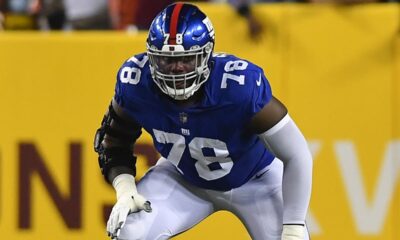

Big Blue Report
/ 2 days agoAndrew Thomas Primed for 2024 NFL Season Amidst Offensive Line Overhaul
As the NFL offseason unfolds, the New York Giants are busy reshaping their roster,...
By Randy Zellea -
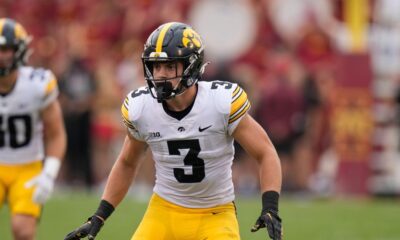

College Football
/ 2 days agoNFL 2024 Rookie Scouting Report: Cooper DeJean, CB, Iowa – Philadelphia Eagles
Drafted by: Philadelphia Eagles Height: 6’0 ½” Weight: 203 Arm Length: 31 ⅛ ...
-
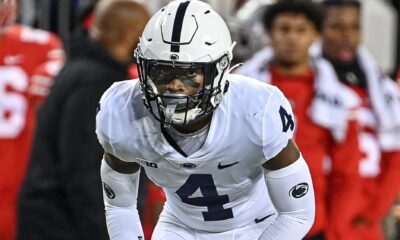

College Football
/ 2 days agoNFL 2024 Rookie Scouting Report: Kalen King, CB, Penn State – Green Bay Packers
Drafted By: Green Bay Packers Height: 5’ 11” Weight: 191 Arm Length: 30...
